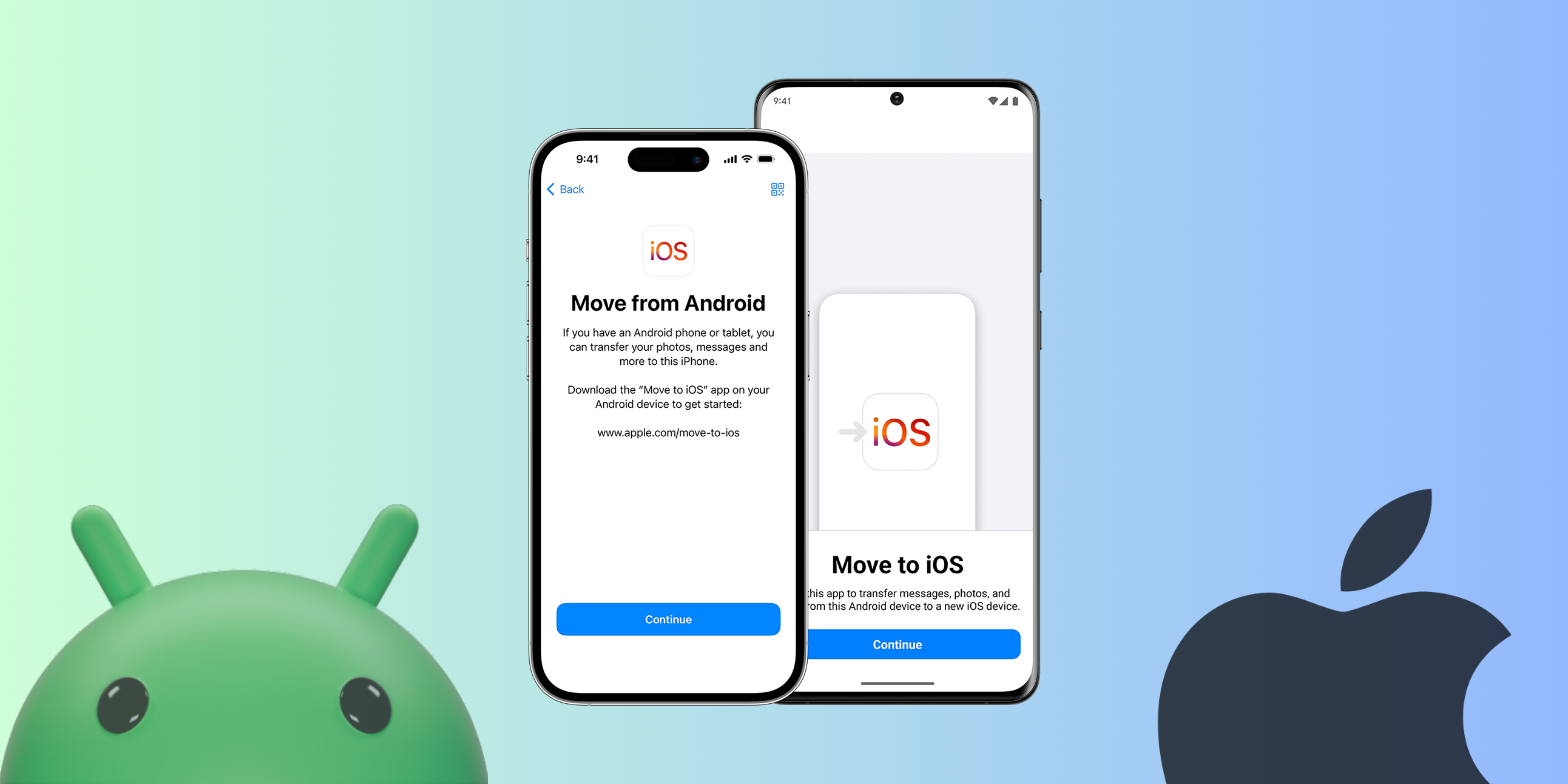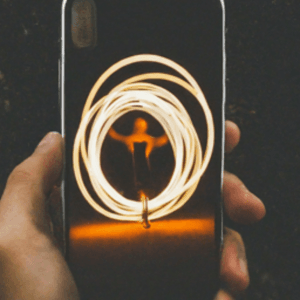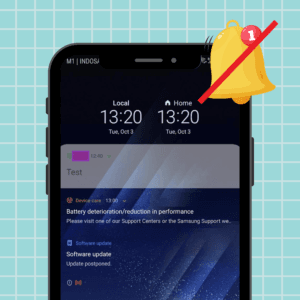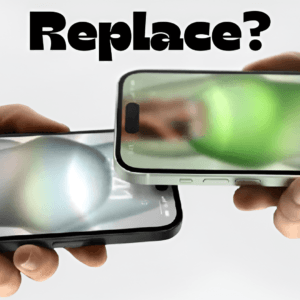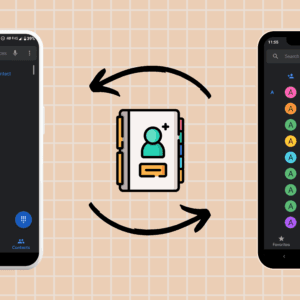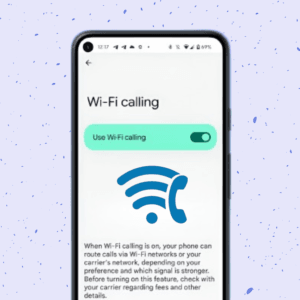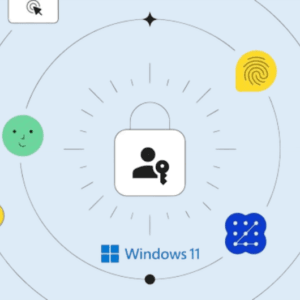Switching from Android to iPhone can feel like stepping into a whole new world—an exciting one brimming with new features, a sleek interface, and the promise of a seamless user experience. But before you can fully embrace your shiny new iPhone, moving your data over is crucial. Fret not! In this guide, we’ll walk you through how to transfer data from Android to an iPhone smoothly and effortlessly, ensuring all your important contacts, photos, messages, and apps make the journey with you.
Method 1: Using the Move to iOS app to transfer data from Android to iPhone
Apple’s Move to iOS app is specifically designed to help you transfer data from Android to an iPhone. It’s a free app that simplifies the whole process, allowing you to move contacts, message history, photos, videos, web bookmarks, mail accounts, and calendars. This method is particularly useful if you’re setting up your iPhone for the first time.
1. On your Android device, download and install the Move to iOS app from the Google Play Store.
2. After configuring your new iPhone, on the Apps & Data screen, select Move Data from Android.
3. On your Android device, launch the Move to iOS app, go over the terms and conditions, and hit Agree.
4. In the Find Your Code screen’s upper-right corner, select Next.
5. Press and hold the Continue button on your iPhone until a six- or ten-digit code appears.
6. Utilizing your Android device, enter the code.
7. Choose the data to transmit. Once done, press Next.
8. Now, the transfer procedure will start.
Note: It may take a while, depending on how much data you have.
Once the transfer is complete, set up your iPhone, and you’re ready!
Also read: Best headphones for working out.
Method 2: Transfer data from Android to iPhone using Google Account Sync
If you rely heavily on Google services like Gmail, Contacts, and Calendar, using Google Account Sync to transfer data from Android to an iPhone is a seamless and efficient method. This method ensures that your essential information is available across both platforms, providing a consistent user experience and a reassuringly easy transition.
1. On your Android device, head to Settings, select Accounts and choose Google.
2. Find and select the Google account you want to sync.
3. Ensure that the Sync Contacts, Sync Calendar, and Sync Gmail are turned on.
4. On your iPhone, navigate to Settings, tap Mail, locate and select Accounts, press Add Account, and head to Google.
Enter your Google account information and turn on the data types you want to sync.
Your contacts, calendars, and mail will start syncing to your iPhone.
Method 3: Manual transfer via Cloud services
If you prefer not to use automated tools or if you want more control over what gets transferred, manual transfer via cloud services like Google Drive or Dropbox is an excellent option. These services give you the flexibility, convenience, and empowerment to save and retrieve your data from any location.
Using Google Drive
Google Drive offers a straightforward way to transfer files and documents. This method is particularly handy if you have many files that you need to access on both your Android device and your new iPhone.
1. On your Android device, launch the Google Drive app.
2. Press the + button, and select Upload.
3. Choose the files you want to upload.
4. On your iPhone, download the Google Drive app.
5. Open the app, sign in, and access your uploaded files.
Using Dropbox
Dropbox is another cloud service that facilitates data transfers. It’s great for transferring photos, videos, and documents between Android and iPhone devices.
1. On your Android device, download and open the Dropbox app.
2. Press Upload, and choose the files you want to transfer.
3. On your iPhone, download the Dropbox app.
4. Sign in and access your files.
Also read: How to buy more iPhone storage.
Method 4: Using computer-based transfer
For those who prefer using a computer as an intermediary, this method allows you to transfer data from Android to an iPhone with the help of software like iTunes or Finder on a Mac. This is especially useful if you have a large amount of data or if you want to ensure everything is backed up on your computer first.
Transfer data using iTunes
iTunes is a versatile tool for managing your iPhone’s content. After transferring your data to your computer, you can sync it to your iPhone, ensuring that your music, photos, and videos are safely transferred.
1. Transfer your music, pictures, and movies from your Android mobile to your PC.
2. Connect your iPhone after unplugging your Android handset.
3. Launch iTunes and select the iPhone icon.
4. Click Sync once you’ve decided what kind of stuff (music, photos, etc.) you want to sync.
Transfer data with the help of Mac (Finder)
If you’re using a Mac, Finder can be a powerful tool for transferring data from an Android device to an iPhone. It works similarly to iTunes and is integrated into the macOS operating system.
1. Connect your Android device to your Mac and transfer your data.
2. Disconnect your Android device and connect your iPhone.
3. Open Finder, and select your iPhone under Locations.
4. Choose the data types to sync, and click Sync.
Also read: How to turn videos into GIFs on your iPhone.
Method 5: Using third-party apps to transfer data from Android to iPhone
Several third-party apps specialize in transferring data between Android and iPhone. These apps offer additional features and flexibility, making the transfer process easier, especially if you have specific needs or large amounts of data.
AnyTrans
AnyTrans is an all-inclusive data management utility that facilitates the transfer of numerous data formats across Android and iPhone devices. Its user-friendly interface and additional features like backing up and restoring data make it a tool you can use with ease and confidence.
1. Download AnyTrans on your computer.
2. Connect both your Android and iPhone to the computer.
3. Open AnyTrans, and select Phone Switcher.
4. Follow the on-screen instructions to transfer your data.
Copy My Data
Copy My Data is a simple and effective app for transferring contacts, calendar entries, photos, and videos between Android and iPhone over Wi-Fi. It’s straightforward and requires minimal setup.
1. Download the Copy My Data app on both your Android and iPhone.
2. Connect both devices to the same Wi-Fi network.
3. Open the app and follow the on-screen instructions to transfer data.
SHAREit
SHAREit is a popular app for quickly transferring files between devices. It supports a wide range of file types and offers fast transfer speeds, making it ideal for those who need to move large files.
1. Download SHAREit on both Android and iPhone devices.
2. Open the app on your Android device, and tap Send.
3. Select the data you want to transfer.
4. Open SHAREit on your iPhone, and tap Receive.
Also read: How to FaceTime on Android with Apple users.
Data transferred to your new iPhone!
Transferring data from Android to an iPhone might seem tricky, but it’s a breeze with these methods. Whether you choose the Move to iOS app, Google Account Sync, cloud services, computer-based transfer, or third-party apps, you can be sure your precious data will make it safely to your new iPhone. Happy transferring!
FAQs
Q. Can I transfer my apps from Android to iPhone?
No, apps cannot be transferred directly due to differences in the operating systems. You’ll need to download your apps again from the App Store.
Q. Will my WhatsApp chats be transferred?
Yes, you can transfer WhatsApp chats using the Move to iOS app or third-party apps like AnyTrans.
Q. Do I need a SIM card in my new iPhone to transfer data?
No, a SIM card is not necessary to transfer data from Android to an iPhone. However, you will need an internet connection.
Q. How long does it take to transfer data?
The time depends on the amount of data you have. It can take anywhere from a few minutes to a couple of hours.
Was this helpful?
Chhavi Tomar is a dynamic person who works as an Editor for The Writing Paradigm. She studied B.Sc. Physics and is currently doing a B.Ed. She has more than three years of experience in editing, gained through freelance projects. Chhavi is skilled in technology editing and is actively improving her abilities in this field. Her dedication to accuracy and natural talent for technology make her valuable in the changing world of digital content.
